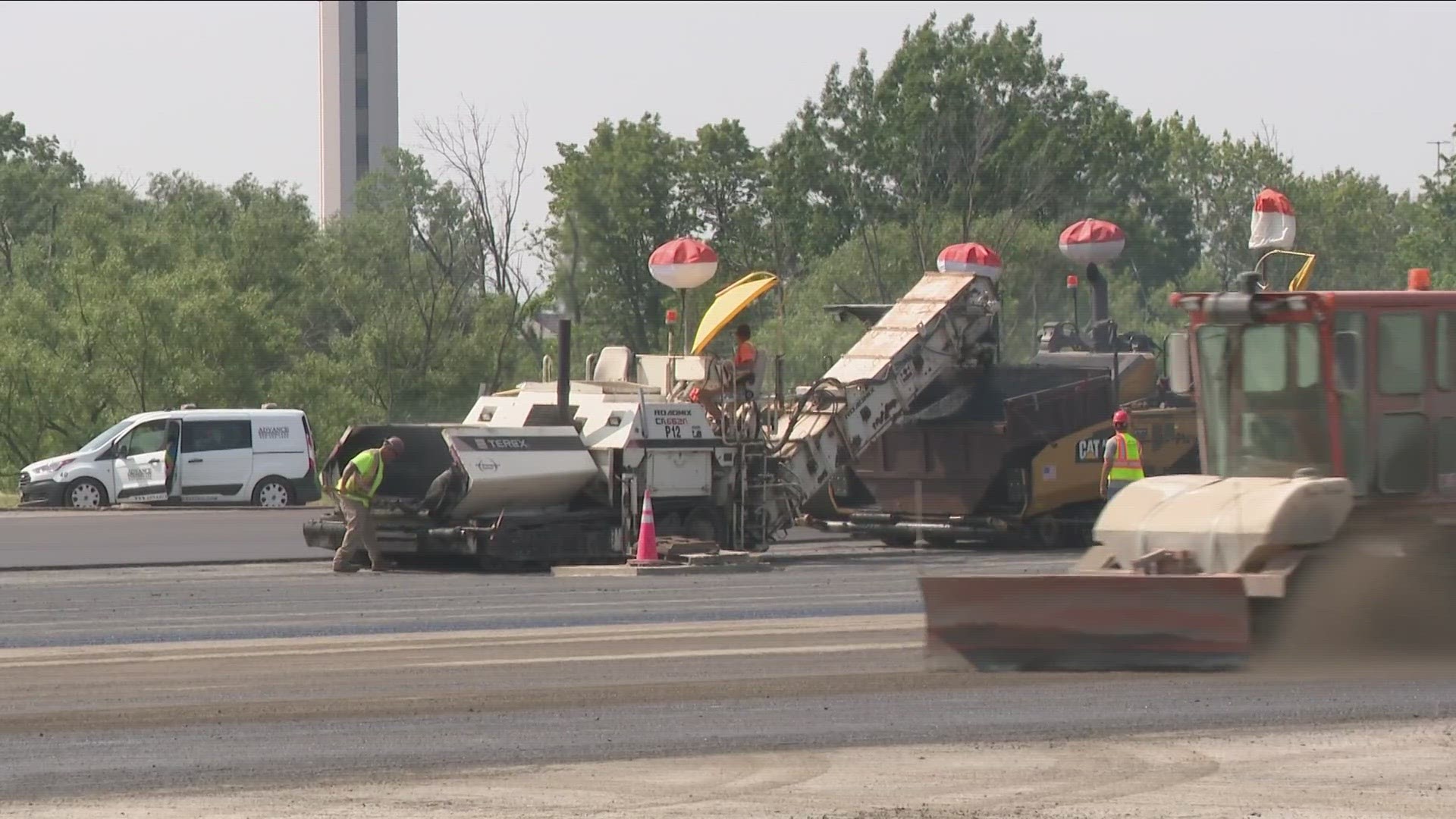CHEEKTOWAGA, N.Y. — It's been almost two months since the Buffalo Niagara International Airport started a project to rehab its main runway, 5-23.
One of the impacts has been suburbs like Amherst and East Aurora, which don't usually see a lot of airplanes overhead, seeing and hearing just that.
The airport is using a secondary runway for take-off and landing while the $36 million construction project continues through the summer.
"We start by removing the old pavement and then basically install our new electrical items and then start paving back up," said Rick Hines, the NFTA's resident engineer on the project.
Crews laid 2,000 tons of asphalt on the taxiway, a drop in the bucket for the 8,800-foot runway, over half of which will be resurfaced during the project.
Hines said that the Federal Aviation Administration requires that runway work be done every 20 years. The main Buffalo airport was touched up in 2004, and the secondary runway that is temporarily being used was redone five to six years ago.
"The pavement wears out over time just as your roads do so it's imperative after so many years you go out and rehabilitate the pavement," Hines said.
During the repaving process, new LED light housings and conduits are being laid under the runway for edge, center, and touchdown lights. Not only are LEDs typically brighter Hines said, good for Buffalo winter, but they are also longer lasting.
"Adding additional center line lights up the runway that way in inclement weather the pilots have an easier time knowing the path they are to take when visibility is very low," he added.
While completing the project is the main goal for Hines and the many workers on the project, safety on the airfield is another. The runway is heavily blocked off and marked with bright orange signage.
On average, Hines said 60 people are working every day, and even more on weekend nights when air travel is less and difficult runway intersections can be tackled. The intersections are still being used.
Hines added: "To keep the airport operational throughout the project so we phase it in where we can keep aircraft moving at all times."
The second half of the runway will be completed during a second runway project in 2025.

